“To his dismay and frustration, he found himself unable to change. He persisted on a sinful course even though the force that originally set him on this course, his will, was no longer being exerted in that direction. Sinning out of habit, he had become sin’s “reluctant victim”, whereas he had originally been its “willing tool.” At work within Augustine as he found himself sinning against his will was the spiritual equivalent of the physical principle of inertia, as defined by Newton more than a millennium later. Eventually, faith in God allowed Augustine to overcome his inertia.
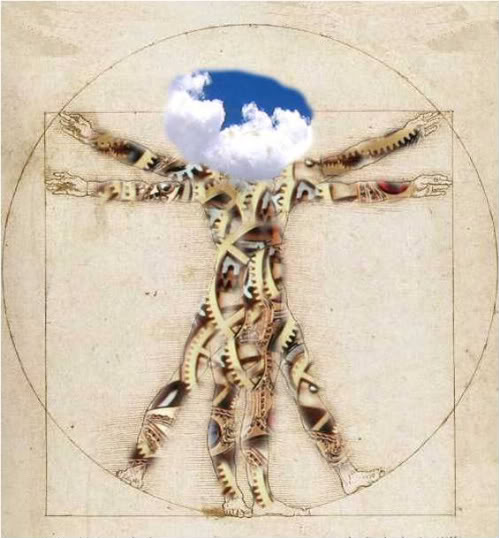
"The dreaded weight of this conclusion, stemmed from the ill-effects of Eighteenth-Century Rationalism, and even further dated to the Calvinistic paradox of predestination and freewill, gives rise to what will be argued here as “mechanical despair” – a severe and seemingly irreversible case of existential gloom found most evident in the horrors of Fyodor Dostoevsky’s “Notes from Underground” (1864). Written in the mid-Nineteenth-Century, just shortly after the Enlightenment, the story presents the dark and sinister underbelly of human nature, and expresses a man’s profound aversion towards the mechanical universe and its coercive dogmas. By seeing himself as a victim of the laws of nature, the nameless narrator (who we arguably suspect is a characterization of Dostoevsky himself) sinks deeper and deeper into loathsome inertia and concedes there is no rational solution to the problem of responsibility. "
In his confession, Jean-Jacques Rousseau presents himself as the passive, although often reluctant, victim of external circumstances over which he felt he had no control. In analyzing his behavior, he resorts to mechanical imagery, depicting himself as physical matter reluctant to quit its state of rest… Rousseau, unlike Augustine, does not try to overcome his inertial tendencies, for he considers them to be natural, and for Rousseau, the work of Nature is not to be tampered with. Thus, instead of chronicling a repentant struggle to change his habits, his confession records his grievances against the external forces which he felt had wrecked his life….
You can’t please all of the people all of the time. And Pisans,a hard-boiled lot, are a difficult people to please. Some accuse the restorers of the Tower, and in particular, James Burland, of sterilising their tower, neutering its mystique; for, part of its old aura had been the possibility it might collapse at any moment, the frisson that a voyeuristic visitor might witness such a fall. Since no toursit wants to see a completely vertical tower of Pisa, the problem is keeping it at a proper and appealing angle…
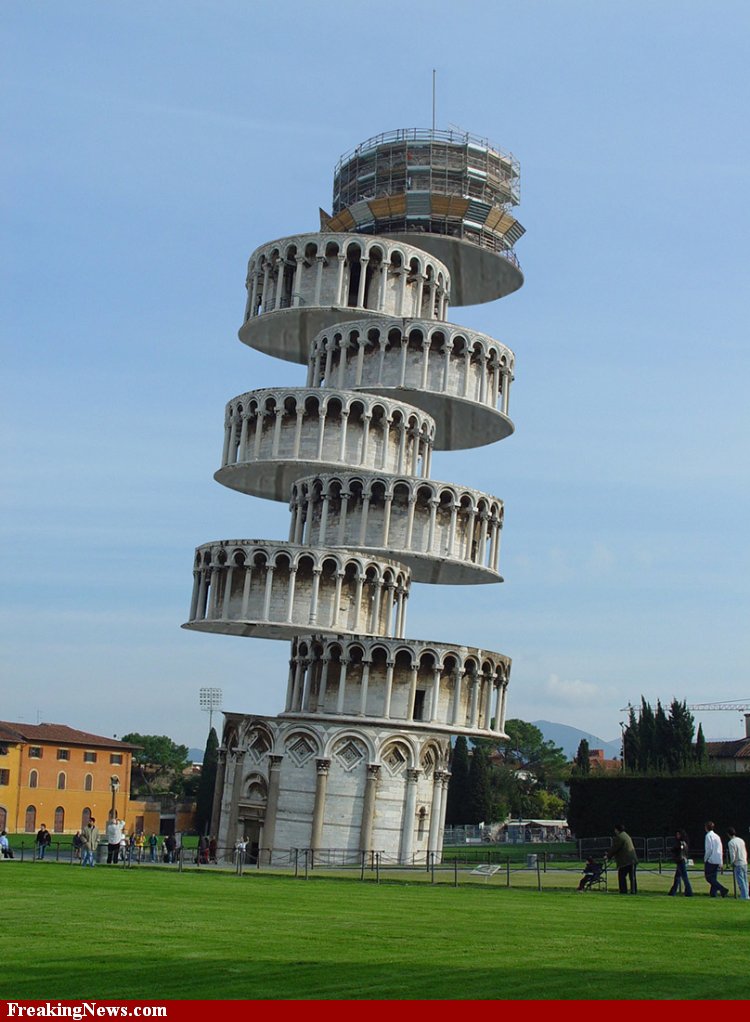
"Heiniger points out that the greatest threats to the tower have always come from people trying to give it a friendly nudge. "I hope it won't happen this time," he says. Burland, in the driver's seat, has perhaps the most reason to carry a rabbit's foot. Everywhere he goes these days the faxes from the control room follow him— two a day telling him how the tower has responded to the latest gentle suctioning underneath it. Every night Burland sends back the next day's instructions, signed. "It's kind of taxing," he said recently, scanning the first fax of the day as he rode the elevator up to his office at Imperial. "It's like trying to ride a bicycle by fax. It's such a dangerous structure, and so many people have come unstuck ( informal fail )on it. By 1995 Burland had done much of the research to develop a permanent solution: soil extraction. It was not a new idea, having been suggested as early as 1962 by an engineer named Fernando Terracina. At Imperial, Helen Edmunds, a student of Burland's but - - - "
For eight plus centuries, proud but anxious Pisans watched their tower tilt ever more daringly with each passing year. The campanile’s pronounced eccentricity had drawn generations of tourist’s who might otherwise have dismissed Pisa as just another college town and hurried on to the bright lights of Florence. Eventually, even the natives declared that “basta” is “basta” The alarming increase in the tower’s inclination involved numerous committees and consultations, before finally at the eleventh hour, a solution was agreed on.
“Imagine a tower founded on ground which has the consistency of jelly or foam rubber to great depth. The inclination of the tower is increasing inexorably to a point where it is about to fall over. Any disturbance to the ground on the leaning side will cause it to topple. Worse still, the material composing the tower is so fragile that the stresses caused by its lean are close to causing structural failure. This picture represents the state of the Leaning Tower of Pisa and demonstrates why its stabilisation represents the ultimate civil engineering challenge.” ( John B. Burland )

"You know it very well "The Tower could collapse at any moment", "It is not true, there is not any danger". I am assuring if you help & co-operate me as a Friend then I can erect (as required) the Leaning Tower of Pisa intact within a year which is totally maintenance free in future . only my reasonable PHYSIOENGINEERING magical TECHNIQUE can solve that problem so easily. As a Friend you can believe me. No doubt I may be unknown to you. If you are a great & intelligent In all aspects then you think very minutely go through my all letters. Periodic Soil Removal is too much expensive and couldn’t save the Tower & Your concept “Concrete Base” is also not appropriate method to save the old Tower in that worst position. Please don’t mind my beloved friend. My proposal is that,” to stop the TRIAL & ERROR experiment ERA after ERA by the various reputed concerns to erect the Leaning Tower of PISA have been fallen flat, where as I am giving the proposal to erect the same so easily and only this project will multiply the dignity of you in world wide by erecting the Leaning Tower of Pisa intact."
In the 13th Century, when the Tower of Pisa was not yet completed, a lean was detected in the construction caused by unstable soil underlying the foundations. Back in its 12th-century pomp, fresh from naval victory over the Saracens of Sicily, Pisa was the pre-eminent maritime republic in Italy. To celebrate, the city elders built a cathedral, plus accompanying baptistery and belfry, on an open site in the city centre.
These early Romanesque masterpieces remain perhaps the finest trio of cathedral buildings on Earth, yet they could barely have been built in a less stable site – especially the 15,000-ton belfry (aka Leaning Tower) erected on just a 200sq m foundation.
Folly and genius went hand in hand, and visitors have been entranced ever since. Pisa lies on a thin layer of soft alluvial silt, above a thick layer of even softer marine clay. It’s practically a bog and only long breaks during the period of construction (1173 to 1370) – which allowed the underlying earth to compact itself and gradually adapt to the belfry’s weight – stopped it toppling over immediately.
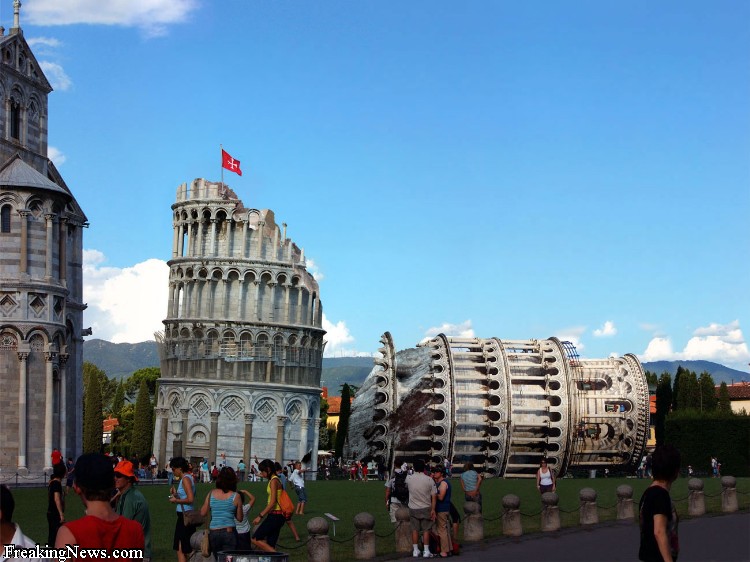
"Most funny thing is that world wide expert engineers & authentic committees continuously thinking since when the Tower starts the extra leaning from the original position. But nobody thinks about GROTTING DOWN THE TOWER under the soil. Those who have come to straighten the Tower of Pisa only with their superb techniques. After started the job for straighten the tower few days late
hey are feeling panicky & applying the trial & error method. After failure from the restoration they are telling sorry. Result is that the Tower has been benefited year after year because he himself little bit SUNK into the soil. I think so, the every Italians know the Tower is already SUNK into the soil 10 feet above. Govt. of Italy as well as PISA Commission should take a decision immediately HOW TO STOP THE GROTTING then STRAIGHTEN THE TOWER."
The tower has tilted pretty much since day one and down the centuries proud Pisans have proclaimed only God was holding it up, out of love for their city. Emotion overwhelmed a coherent analysis and among the armchair experts, Italy’s famous pasta was a metaphor for that noodle between the two ears. Nobody could work out what was causing the inclination. If the soil was uniformly unstable, why should the tower lean south rather than north?
Cue confusion, consternation and no end of wacky proposals, such as attaching helium balloons to the tower’s top, to hold it up; or re-landscaping the piazza, so it sloped in the same direction as the belfry leans, giving an optical illusion of everything being upright.Mussolini, meanwhile, thought a wonky tower was a wholly unfit symbol for Fascist Italy and tried to restore its verticality, by drilling holes through the floor and pouring 80 tons of concrete into the foundations. As in so many things, though, Il Duce failed, and the tower continued its steady lurch, reaching 4.7m off-centre in 1989, the year yet another medieval belfry fell, the Civic Tower of Pavia (near Milan), killing four bystanders. Conflict resolution basically centered around metaphysical and ontological dissertations of the chicken and egg variety:

"Now the question is - - - - Those who destroy whimsically -- They are a TERRORISTS. Those who destroy slowly With cool brain & fulishly --------------------- What they are called ? ? ? Punishment should be shame for both of them. My earnest request to Govt. of Italy neither take decision immediately for rescue the Wonder Tower from GROTING nor in any day expert Burland will say ..."
“There were 14 egos at work and little common ground between people from such different disciplines,’ says Burland. ‘As opposed to rational, British-style discussion, meetings were emotional, with polemical speeches in Italian for hours on end. Often my translators struggled to keep up and I hadn’t a clue what was going on.’ Broadly speaking, the structural engineers disagreed with the geotechnical engineers over whether the key lay in the tower itself or in the earth beneath it, while both were at odds with the art historians, who feared intervention of any kind and demanded the belfry’s ‘character and integrity’ be observed. A permanent prop, for instance, was a definite no-no.” ( Burland )
The concerns regarding the Pisa Tower are not only focused on the inclination, which reached approximately 5.50 degrees in 1991, but also on the danger of the external facing instantaneously collapsing due to local buckling. The Commission, chaired by Professor M. Jamiolokowski (Professor of Teotechnics at the University of Turin/Italy), came to the conclusion that the most critical cross-section occurs at the first cornice on the south side of the tower. Due to the increasing inclination, the compressive stresses increase as well. In addition, the cross-sectional area of the wall is reduced by a large opening caused by the internal helical staircase.
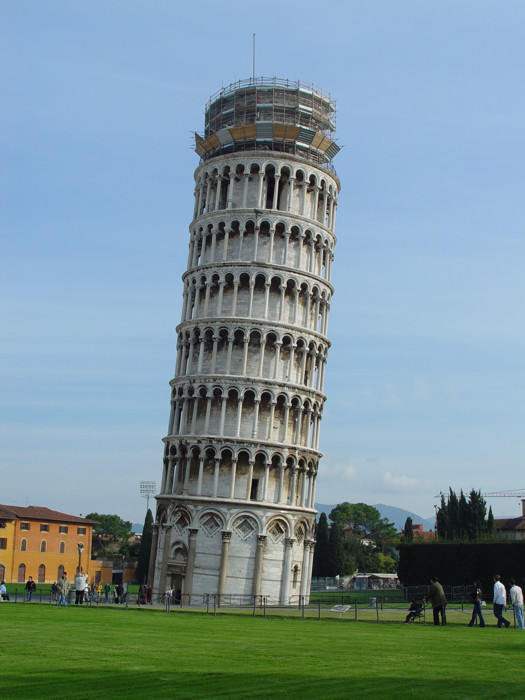
"So many interested persons aware very well that, Gary Feuerstein has been published the message through his so many creative website’s regarding the project of Leaning Tower of Pisa since few years. But a funny thing is that he published different measurements & calculations like Angle, Degree, Height, Weight etc. but who told us, which one is the correct ? Don’t take it other wise my friend, where as ONLY ONE mm ( 1 mm ) is a great factor for inclination or straighten as per messages. If you go through the different Gary’s website on this project then you will feel stunt...."
“Burland was convinced he had such a solution – a process called soil extraction – and ultimately he won over the rest of the committee. Akin to microsurgery, it entailed drilling out slivers of soil from beneath the northern side of the tower – away from the lean – and allowing gravity to coax the structure back upright. It had the advantage of not touching the tower itself, so keeping the art historians happy. ‘The pressure was immense, a modern wonder of the world was at stake – but I never doubted the logic of soil extraction,’ says Burland, cool as you like. As revealed in The Tower Restored, the procedure was actually pioneered in 1832 by Victorian engineer James Trubshaw on the leaning church-tower of St Chad’s in Nantwich. Work began in 1999, using delicate, Archimedes-screw drills. At the same time, technicians in a piazza-site trailer monitored data from 120 sensors set up inside and beneath the tower.
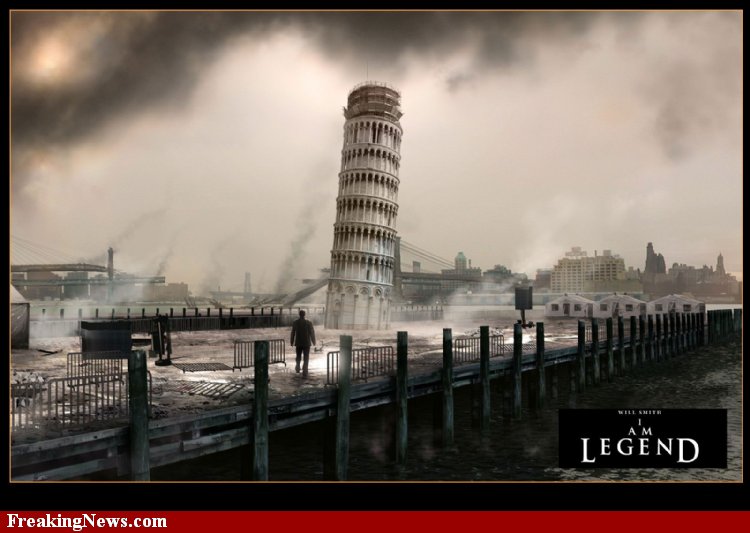
"Most probably the other assumption is possible: architects knew that they were building on a very poor foundation and that's why they had already put in a possible slight bend in construction design. “Falling” tower is of cylindrical shape and soars up with its seven storeys (including belfry). Its six central floors are banded with decorative arcades with a possible influence of Byzantine or Islamic architectural traditions. The issue of Islamic influence is well based because as it is not known whether the idea of separate bell tower appeared in Christian church architecture under the influence of Muslim minarets, or on the contrary, the minarets alone with muezzins on the top, called pious for praying, had their originated from Christian bell towers. Galileo Galilee, famous astronomer, was born on 1564, in Pisa. According his own narrations, he used Pisa tower for his experiments. From the top floor he threw down various objects to demonstrate that their descending speed was independent of their mass."
Via his data analysis, Burland unlocked the 800-year mystery as to why the tower leans south not north: namely, a fluctuating water-table on the upper layer of silt. By a quirk of local geography, Pisa’s water-table rose higher on the tower’s north side, often reaching within one foot in rainy season, and this gave the tower an annual ratchet southward. Armed with this vital information, in 2003, Burland introduced a new drainage system beneath the piazza’s north side, one that lowered and stabilised the water-table, so there’s no kick in either direction. Problem solved.
The inclination continues to be monitored daily by the OPP and new figures reveal that the tower didn’t move at all between 2003 and 2009. ‘It’s stopped leaning completely. After soil extraction and now the water-table stabilisation, the tower is safer than ever,’ says Burland with a mixture of pride and relief.
When Dostoevsky’s confessional hero, the pawnbroker, discovers inertia at work in his life, he clearly regards it as a pernicious threat. And since at the end of his confession, he seems to have failed to disarm this threat, his vision of inertia naturally becomes more tragic than that of Augustine (who disarmed the threat) and that of Rousseau (who saw no threat to begin with.) And yet, much like Rousseau, the pawnbroker initially tends to attribute events in his life to forces external to himself, ones over which he has no control. He sees his whole life as having been determined by a “tyrannical injustice” against him (tiranicheskaja nespravedlivost’ protiv menja), whereby nobody loved him. He refers to his regiment, which he regards as the most significant event in his life prior to his marriage, as an “external circumstance” (vneshnee obstojatel’stvo), and stresses its “accidental nature” (sluchajnyj kharakter) and the fact that it resulted from an “unfortunate concatenation of circumstances”








 COMMENTS
COMMENTS



